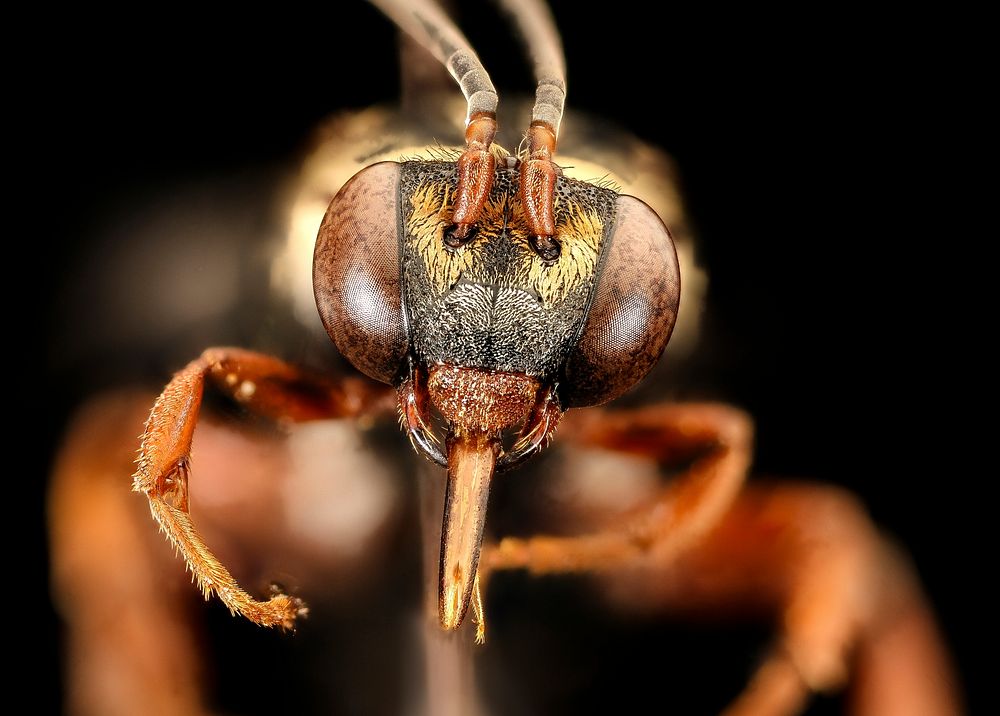
Triepeolus lunatus, f, face, Charleston Co., SC
Another nest parasite. Another Triepeolus. This time is is T. lunatus. A common species for a nest parasite in that it shows up regularly. The thought is that it is the nest parasite of Melissodes bimaculata which is perhaps the most abundant long-horned bee in the East, but probably is more generic in what Melissodes' nest it will invade. None of this nesting is absolutely confirmed, simply because not enough of you are looking, watching, and studying bees right in your yards. Also note, in the side few the long brushy things coming out of its butt below the sting. What are those? No one seems to know but all the Triepeolus have modified their sixth sternite in this way. This beauty was captured in Watermelon fields outside of Charleston, SC by Mimi Jenkins. Photo by the new intern Kelly Graninger (good job Kelly).
Beauty is truth, truth beauty - that is all
Ye know on earth and all ye need to know
" Ode on a Grecian Urn"
John Keats. Original public domain image from Flickr